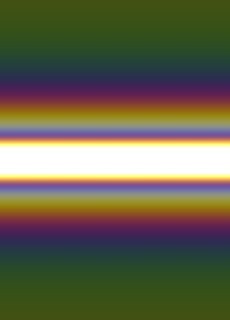Freaktures – An Exploration of the Perception of Artificial Life
This project has been an informal exploration of the creation and human perception of digital life. I have created a supporting program in order to try out some ideas and expand my knowledge of programming. So far in the program I have created basic digital creatures called Freaktures which move around the screen making decisions on where to go based on random values. I have purposely left the Freaktures without any textures or secondary animation because, based on my friends reactions even early on in the project, this seems to encourage a more natural, uninhibited use of the
An Exploration into Colour Symbolism as used by Different Cultures and Religions
As any visual artist will know, the use of colour plays an extremely important part in a piece or work whether we are dealing with still or moving images. However, throughout history the way that colour is used has evolved in a way that can be seen to vary greatly between different nations, continents and religions. Colour does not follow a unique, universally recognisable code, and we must be aware of this not only as viewers, but perhaps more importantly as artists and directors. The associations that we make with any form or media that involves colour are dependent upon the culture in which we have been raised. Therefore problems may arise when we are dealing with media that is intended to be shown across a range of cultures. You could, for example, choose a colour palette in such a way as to encode a hidden message that would provide extra information to the viewer who was able to interpret the signs. However if you do so, it is important that you are aware that depending on the cultural or religious background of your audience, the signs and thus the message that you wish to convey, may be misinterpreted or even completely overlooked.
Chimaera Creature Development
For this project I wanted to select a task that would let me develop my creative skills away from the computer. I wanted to develop and design a
A study of the importance of anatomy in character modelling and design
This project is a study of the impor tance of anatomy in character design. The practical side is essentially six different characters created out of the exact same mesh, each with a different physique based on a real body structure, with only slight changes made to create a character, thus the character is largely defined by its anatomy. By morphing between these, the final product (a thirty second animation) displays how the body changes. This mean that the viewer can see the muscles weakening, or the bones growing, or fat forming, or whatever change they are viewing, thus helping them to understand how many different characters can be created out our existing natural design, and hopefully educating them in an enter taining way. It should be stressed that this is not a study into character design, any of the characters in this project could be infinitely more fleshed out, but one of the ideas behind the project was to have as minimal change from reality as possible, to show how real anatomy can be the basis of many characters.
Painterly Motion Blur for Moving Images
In this report a series of steps for applying a painterly motion blur to an object in motion is presented. The techniques used can in general be applied to any sequence of 2D images where the subject can be separated from the background. These steps were developed from a series of experiments generated from research within the area of non-photorealistic rendering and motion blur for animation and games. It uses a combination of motion vectors and a number of displacements by filmed footage.
Innovations
This is a report on my attempt to develop an application that will take multiple sound inputs and convert them into live 3d visuals. The libraries used were OpenGL, OpenML and FMOD. This report covers my initial aims, how I went about trying to achieve those aims, the results I achieved and the conclusions I came to.
Resources aimed at Head Creation
The overall goal of this project is to create resources aimed at artists that will improve their ability to create believable photoreal heads and try and cut the amount of time taken to do so.
Iridescence in Computer Graphics using the wave theory

Iridescence is a natural phenomenon which is caused by the wave nature of light. In this report we will be looking at modeling light as a wave to generate interference in light waves, which can then be taken further to create the iridescent effect of the Morpho butterfly. Interference of light and how representing light as waves, as opposed to the more commonly used particle representation, can give us these results.
Abstract Animation
An Intuitive Manipulation System for Virtual Scenes
Described here is an intuitive manipulation system for virtual scenes, using hand movements tracked by a domestic web camera. Methods for tracking position and hand shape are discussed as well as methods for affecting virtual objects using this data.
